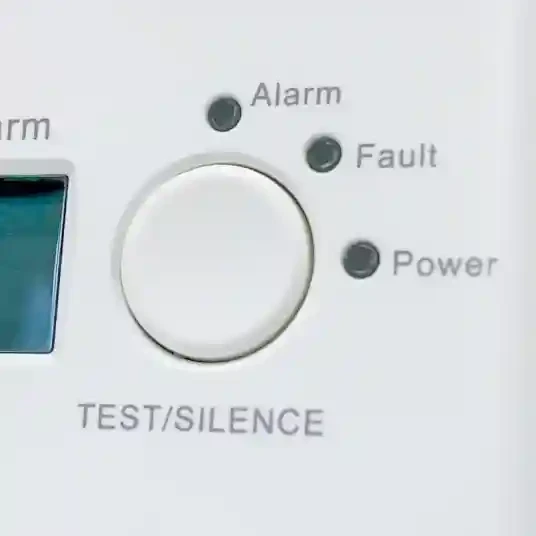
Need assistance?
Need Assistance? Call Us 0330 058 0630
02/10/2024 • by Alice P

As a landlord, it is a legal requirement to equip an owned property with smoke alarms and carbon monoxide alarms. If ignored, landlords may be fined up to £5,000 per breach. Owning and correctly installing CO alarms are a critical part of keeping tenants safe. It is important to understand the basics, from what carbon monoxide alarms are to the legal requirements, to ensure that everyone stays protected.
Carbon monoxide (CO) is a poisonous gas produced by the incomplete burning of carbon-based fuels, including gas, oil, wood, and coal. This can be caused by faulty appliances such as boilers, cookers, heaters, and gas fires, to name a few.
Carbon monoxide is an odourless, colourless, and tasteless toxic gas. Due to its properties, it can easily and unknowingly be inhaled. Carbon monoxide poisoning can be extremely harmful and can result in serious injuries. Therefore, having a carbon monoxide alarm to alert tenants to the danger is critical.
Carbon monoxide alarms continually monitor the levels of carbon monoxide in the air. They will sound an alarm if they detect unsafe levels of CO.
There are various types of carbon monoxide alarms, but two are most popular for household use:
Electrochemical– These are the most common and affordable type of carbon monoxide detector. They create a chemical reaction to the presence of carbon monoxide by producing an electrical signal proportional to the gas concentration.
Semiconductor - This type of detector relies on circuitry instead of a chemical solution. As carbon monoxide meets a sensor’s chip, it lowers the material’s resistance to the flow of electricity to a degree that depends on the concentration of the chemical present in the air.

From 1 December 2022, in England, the laws for carbon monoxide alarms changed to state that a CO alarm must be installed in any room used as living accommodation that contains a fixed combustion appliance. This is any appliance that uses fuel to generate heat but excludes gas cookers. The local housing authority may serve a remedial notice to landlords found in breach of the regulations resulting in a fine of up to £5,000 per breach, rather than per landlord or property.
A full breakdown of the legal requirements in England can be found here.
In Scotland, by law, all homes with a carbon-fuelled appliance or flue must have a carbon monoxide alarm present.
Carbon monoxide alarms must be installed in any room containing any fixed combustion appliance, except gas cookers. This means a fixed apparatus where fuel of any type is burned to generate heat. These appliances are typically powered by gas, oil, coal, wood, etc. such as gas or oil boilers, or log-burning stoves.
Carbon monoxide detectors must be placed high up. The gas will accumulate near the ceiling so placing the detector close to the top of the room gives it the best chance to detect CO.
Be careful not to place CO detectors too high. Placing the alarm in an easy-access and visible location ensures they can be inspected and maintained easily. Lack of awareness and forgetting to change batteries can defeat the purpose of a carbon monoxide alarm.
The National Fire Protection Association suggests positioning carbon monoxide detectors outside each sleeping area or bedroom, on each floor of the home, and in those locations required by local laws.
The Scottish government advises that you should not place a carbon monoxide detector in the following:
In an enclosed space such as a cupboard or behind a curtain
Above a sink
Next to a door or window
Next to an extractor fan, air vent, or other ventilation device
In an area where it may drop below -10°C or +40°C
Where dust or dirt may collect
In a damp environment
Extremely close to a cooking appliance
Most CO alarms will omit a chirp when they are low on battery, but not all. Landlords should check the carbon monoxide alarm every time they visit. These alarms can be battery-powered, offering a lifespan of 7 to 10 years, with options to interlink with a smoke and heat alarm system. It is the landlord’s duty to check any obstructions covering the unit or any build-up of dust that might affect the quality of the detectors.
Most carbon monoxide alarms feature a single button for testing. To test a carbon monoxide alarm, press and hold the test button on the alarm. The detector will sound 4 beeps, a pause, then 4 beeps for 5-6 seconds. However, some devices may differ, therefore it is recommended you refer to the device's user manual.

Landlords are legally responsible for testing and installing carbon monoxide alarms at the start of a tenancy. During the tenancy, tenants are responsible for reporting issues with the carbon monoxide alarms. We advise landlords to check carbon monoxide alarms during each property visit, recording when the alarms are installed, tested, and repaired.
We stock a range of carbon monoxide detectors, including battery-powered, mains-powered, and interlinked alarms. Our alarms meet the highest safety standards and are designed to provide peace of mind. Whether you’re a homeowner or a landlord, our range of carbon monoxide detectors will help you comply with safety regulations and protect your property.
If you have questions about any of our carbon monoxide alarms or other equipment, contact a member of our team on 0800 999 2661 or email at [email protected]
30/05/2024 • by Lynsey B